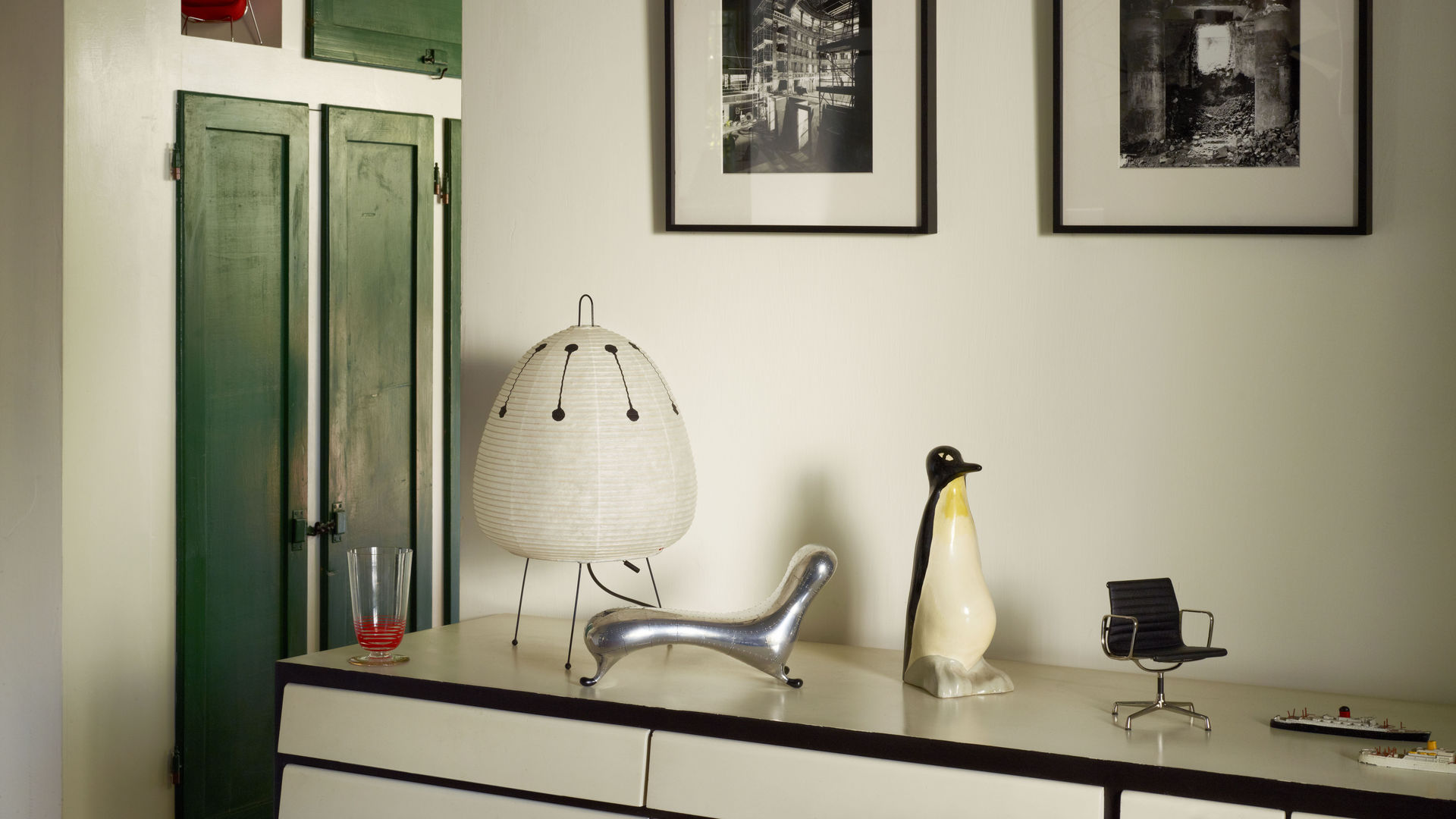
Miniatures Collection - Aluminium Chair
Charles & Ray Eames, 1958
Charles Eames became preoccupied with this problem until one day during a flight he came up with the idea of an aluminium frame construction combined with a material »seat«. He wanted to develop a shape following the natural lines of the body, not however as a hard shell, but as a resilient length of material stretched between two supports which trace the body's natural form. A narrow plastic strip extending the length of the material acts as reinforcement. The material is held in place by insertion into slits on the frame's outer edge.
Experiments with different covering materials later resulted in an upholstered sandwich construction consisting of two layers of »Nauga hide« with a thin filling of vinyl-foam and vinylwadding stitched at intervals of 1 7/8 inches using a high-frequency welding technique. Originally conceived for outside use, the first aluminium easy chairs to be mass produced, are today used solely in interiors.
Miniatures Collection
Durante más de dos décadas, el Vitra Design Museum ha hecho réplicas en miniatura de las piezas más importantes de su colección. La Miniatures Collection es un compendio de la historia del diseño de mobiliario industrial, desde el Historicismo y el Art Nouveau hasta la Bauhaus y la Nueva Objetividad, desde el Diseño Radical y el Posmodernismo hasta nuestros días. Con un tamaño que es exactamente un sexto del de los originales históricos, las sillas son fieles a la escala y reproducen hasta el menor detalle de construcción, material y color. La autenticidad llega incluso a la veta natural de la madera y a la reproducción de los tornillos y las complejas técnicas artesanales utilizadas. Por este motivo, las miniaturas se han convertido en objetos de colección muy populares y en un material didáctico ideal para universidades, escuelas de diseño y arquitectos.
